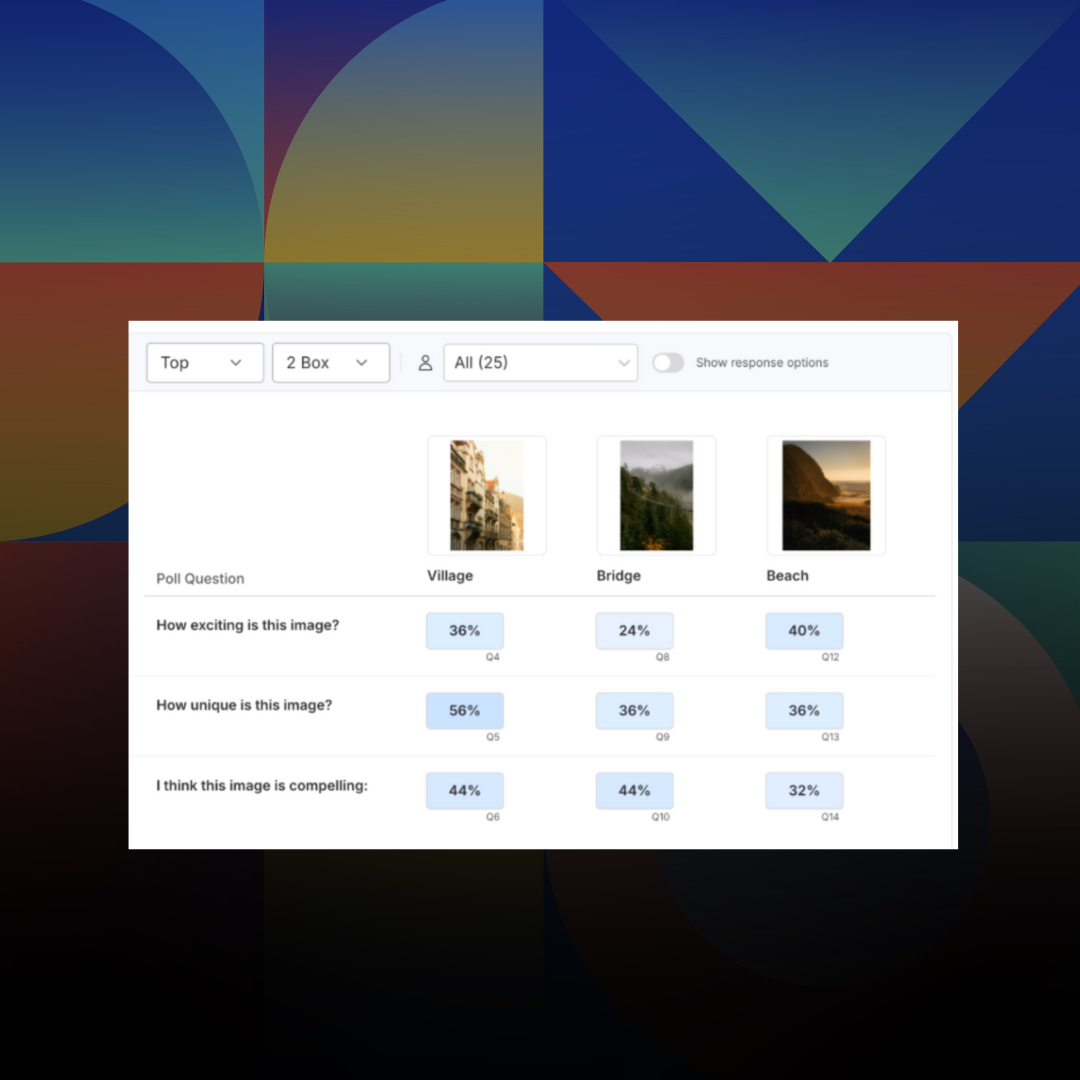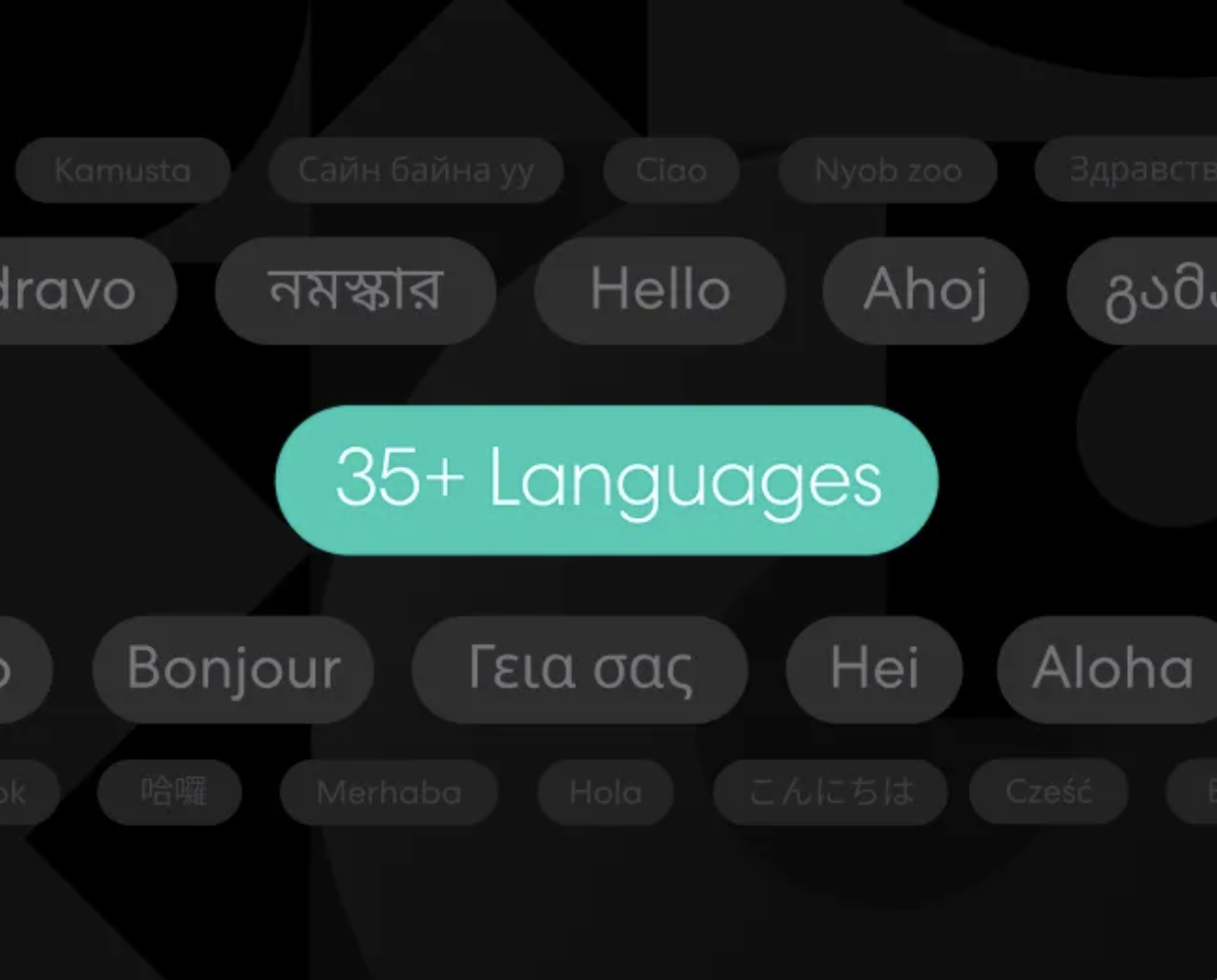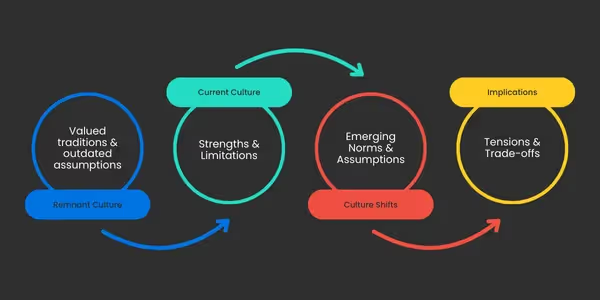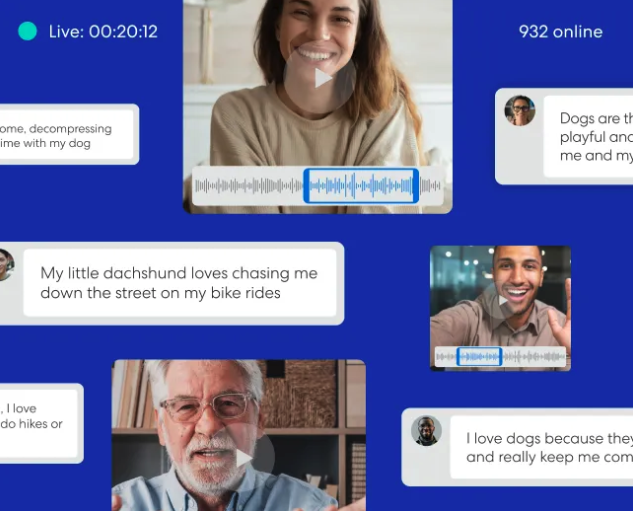
Advanced Research
The Most Cutting-Edge Consumer Insights Software of 2026
Team Remesh
January 5, 2026
Market Research
Articles

Advanced Research
The Most Cutting-Edge Consumer Insights Software of 2026
Team Remesh
January 5, 2026
Market Research
Articles

Research 101
Introducing: Poll Comparison - Streamline Concept Testing and Make Better Decisions Faster
Emmet Hennessy
November 24, 2025
Market Research
Articles

Research 101
Introducing: Poll Comparison - Streamline Concept Testing and Make Better Decisions Faster
Emmet Hennessy
November 24, 2025
Market Research
Articles

AI
Purpose-Built for Research AI is Here - a Letter from the CPO
Jessica Dubin
October 21, 2025
Market Research
Articles

AI
Purpose-Built for Research AI is Here - a Letter from the CPO
Jessica Dubin
October 21, 2025
Market Research
Articles

Advanced Research
Unlock Agile Global Insights: Using Remesh Multi-Language Conversations for Research Across Audiences
Customer Success Team
October 14, 2025
Market Research
Articles

Advanced Research
Unlock Agile Global Insights: Using Remesh Multi-Language Conversations for Research Across Audiences
Customer Success Team
October 14, 2025
Market Research
Articles

AI
The Prompt Is the New Moderator Guide
Anthony Lam
September 16, 2025
Market Research
Articles

AI
The Prompt Is the New Moderator Guide
Anthony Lam
September 16, 2025
Market Research
Articles

AI
Building an AI-Ready Research Stack: Beyond Data Preparation
Anthony Lam
September 9, 2025
Market Research
Articles

AI
Building an AI-Ready Research Stack: Beyond Data Preparation
Anthony Lam
September 9, 2025
Market Research
Articles

AI
Agentic AI for Research: A Practical Primer
Dan Reich
September 2, 2025
Market Research
Articles

AI
Agentic AI for Research: A Practical Primer
Dan Reich
September 2, 2025
Market Research
Articles
Want to Prevent Culture Drift? Take a Temporal Perspective
Prevent culture drift in your organization by taking a temporal perspective today and to keep things moving in the right direction.



In recent years, culture maintenance has become a priority in many organizations. Many leaders fear that in today’s disruptive business environment, culture drift—the gradual erosion of critical values and shared assumptions—could lead to culture disintegration. One of my colleagues, the head of engagement and culture at a mid-sized healthcare facility, expressed this fear clearly: “Things just haven’t been the same since the pandemic. Everyone says something feels different. And we’re seeing negative trends on our annual employee survey. We need a cultural reset—some kind of jump start.”
Because the root causes of this decline were so hard to pinpoint, my colleague wanted to conduct a post-survey conversation with the entire workforce—just over 8,000 employees—about their experiences at work. Realizing that it would take months to gather this data via traditional focus groups, he started looking for alternatives and discovered Remesh.
As we discussed ways of using the platform to help with this effort, he shared his research plan. He wanted to conduct a conventional culture review, asking employees to describe the existing culture, envision an idealized future culture, and identify discrepancies. “A gap analysis could be interesting,” I said. “But it could also prevent you from learning what has changed over the past couple of years. If you want to understand how and why your culture has shifted, you need to take a different approach.”
Considering Culture from a Temporal Perspective
Many leaders assume that the healthiest cultures are steady and unchanging, a constant backdrop that stabilizes systems. But the work of cultural theorist Raymond Williams counters this assumption. According to Williams, organizational cultures are dynamic and ever-changing, vacillating back and forth between historical traditions and values, present-day norms and trends, and emerging challenges and opportunities. Building on Williams’ theory, psychologist Jane Bryson has shown how researchers can gain deeper insights into cultural dynamics by exploring the interactions between an organization’s historical or remnant culture, its dominant current culture, and its new and emergent culture.
Williams’ theory allows for a powerful way to trace the evolution of culture over time. By reflecting on what your culture once was, what it is now, and how it is changing in response to emerging events, you can understand how your organization is developing, where it might be stuck, and how it may need to adapt in the future. Which legacy cultural elements and traditions anchor your company? What holds you back? Which emergent trends are helping your organization innovate and adapt? Which are pulling your employees off course? How does your current culture need to change to ensure your organization is prepared for the future? These are the kinds of questions you can explore through a temporal investigation of culture.
The Brainstorm
After sharing this perspective with my colleague, we brainstormed ways it could inform his inquiry. We arrived at four broad topics he wanted to explore with his workforce.
- Remnant culture: What valued traditions and outdated assumptions from the past are still affecting the organization?
- Current culture: What are the strengths and limitations of the current culture?
- Culture shifts: What new norms and nascent assumptions are emerging?
- Implications: Where are the tension points between the past, present, and future and what are the opportunities for development and change?

Based on these topics, we then built out a customized conversation guide consisting of a series of closed and open-ended questions. Some items in this guide came from Remesh’s library of culture-specific research questions; a subset of these items can be found here.

After developing the conversation guide, my colleague and I reflected on what he hoped to learn from his Remesh conversation with his employees. “My whole perspective on our culture crisis has shifted,” he said. “I’m a lot less concerned about culture drift. Instead, now I want to know what kind of culture pruning we need to get started.”
Organizational cultures are not static. They are constantly in flux, influenced by a range of internal and external pressures and events. By examining your culture through a temporal lens — exploring how your legacy culture, your current culture, and your emerging culture are interacting and shaping people’s perspectives — you can develop a better understanding of the steering currents, basic assumptions, and tension points that are affecting your leaders, managers, and employees and influencing their behavior.
-
Lorem ipsum dolor sit amet, consectetur adipiscing elit. Suspendisse varius enim in eros elementum tristique. Duis cursus, mi quis viverra ornare, eros dolor interdum nulla, ut commodo diam libero vitae erat. Aenean faucibus nibh et justo cursus id rutrum lorem imperdiet. Nunc ut sem vitae risus tristique posuere.
-
Lorem ipsum dolor sit amet, consectetur adipiscing elit. Suspendisse varius enim in eros elementum tristique. Duis cursus, mi quis viverra ornare, eros dolor interdum nulla, ut commodo diam libero vitae erat. Aenean faucibus nibh et justo cursus id rutrum lorem imperdiet. Nunc ut sem vitae risus tristique posuere.
-
More


Introducing: Poll Comparison - Streamline Concept Testing and Make Better Decisions Faster

.png)

.png)
Read More

.png)
.png)
.png)

.png)

.png)
Learn More

.png)
.png)
.png)

Stay up-to date.
Stay ahead of the curve. Get it all. Or get what suits you. Our 101 material is great if you’re used to working with an agency. Are you a seasoned pro? Sign up to receive just our advanced materials.






